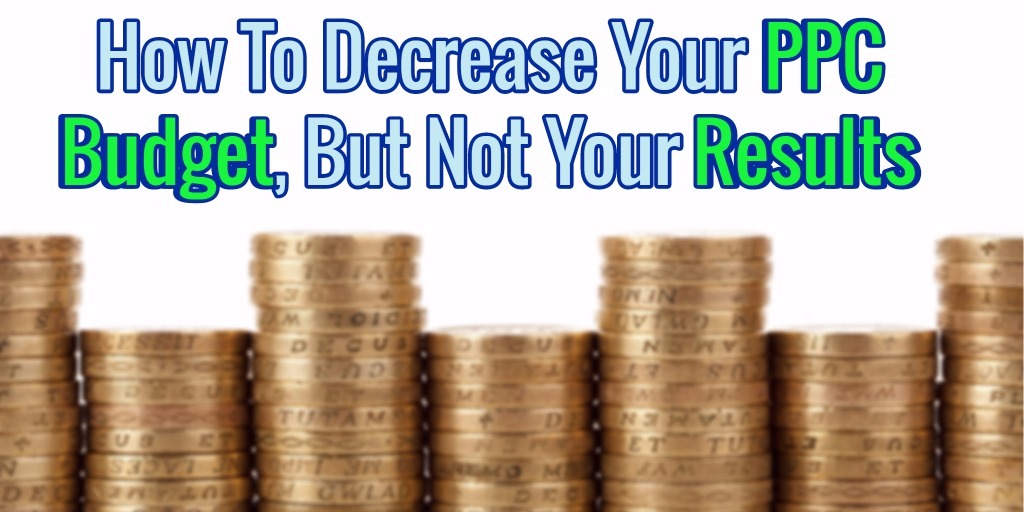
The end of the year is a great time to evaluate your previous year’s performance and make adjustments to your budgets. While marketing dollars continue to shift toward online channels, some businesses will need to cut back on their PPC budget. So how can you wisely cut your PPC budget without cutting your results? Here are 3 tips:
Cut The Fat
In every account there are campaigns/ad groups/keywords that spend budget and don’t product conversions. Let’s say that you need to cut your PPC budget by 20% and you’re going to focus on keyword-level performance.
The quickest and easiest way to reduce your spend would be to filter out converting keywords (make sure to use a long enough time frame that you don’t eliminate high quality, low volume keywords) and then sort by spend from highest to lowest.

Then start pausing keywords that spent money but didn’t generate results. However, that may not be enough.
Get Into The Meat
If cutting non-converting keywords isn’t enough, then you need to start looking at just what queries your converting keywords are matching to. It’s likely that you can eliminate even more spend by adding negative keywords and keep your ads from getting low-quality clicks.
I wrote a detailed post on how to do this, so click this link to read how to check your search queries.
Cut To The Bone
If you still haven’t been able to cut down your spend enough by eliminating non-converting parts of your account and adding negative keywords to clean up your relevance, then it’s time to start doing the hard work: improving your funnel.
The harsh reality of most PPC accounts is that 90%-95% of clicks DON’T convert. Yep, if you’ve got a conversion rate of 5%-10% (which many advertisers would be tickled pink to have) then you’re accepting that 9 in 10 clicks won’t convert.
So let’s run the numbers on a pretend PPC advertiser who needs to cut his PPC budget by 50%, from $20K/month to $10K/month. She cut all non-converting keywords and eliminated approximately 20%. Adding negative keywords should eliminate a further 10%. But that leaves another 20% of the budget that needs to go. How can $10K/month produce the same number of conversions as $14K?
At $14K/month, with an average CPC of $1.50 and conversion rate of 5% our example has a cost/conversion of $30 and produces 467 conversions each month. If she just sets budget caps at $10K/month she’ll only get 333 conversions.
However, let’s say that she improves her conversion rate from 5% to 7% (how to do this is another series of posts). Now if she spends $10K/month she will get the same 467 conversions, but only spend $10K/month.
This is exactly the goal we set out to accomplish: decreasing your PPC budget while keeping your results. So go out there and get to work.
Hand-Picked Related Articles:
- How Much You Should Spend on Pay Per Click Advertising
- How To Test & Optimize PPC Ad Campaigns
- How Expensive Will The Cost Per Click On My Google Adwords Keywords Eventually Get
* Adapted lead image: ![]() Public Domain, pixabay.com via getstencil.com
Public Domain, pixabay.com via getstencil.com
